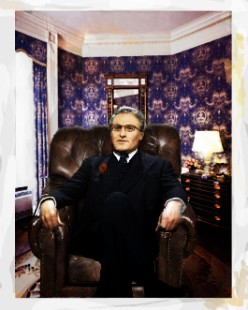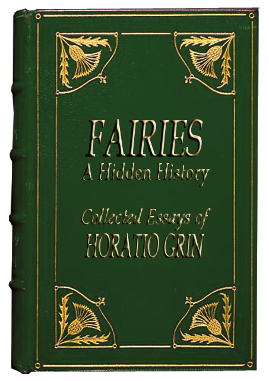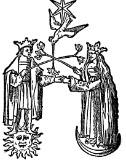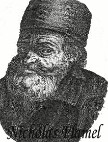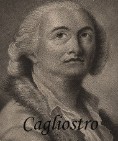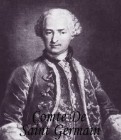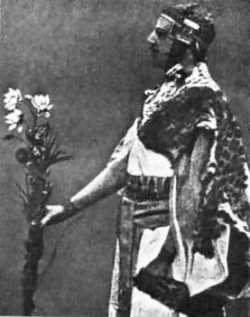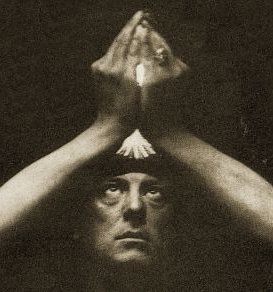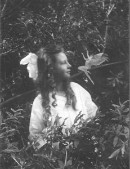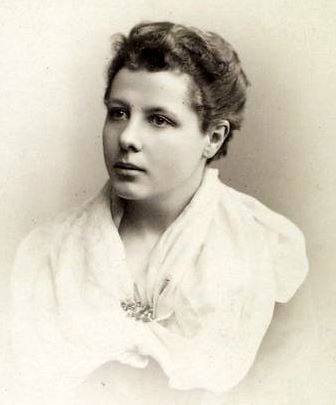Notable English Alchemists
Horatio Grin
Horatio William Grin was born 29 July 1940 in the village of Kingstone Warren, Oxfordshire, in the shadow of White Horse Hill. His parents were William George Grin, Barrister and latterly King’s Counsel and Beatrice Caroline Grin nee Lough, a younger daughter of Squire Horatio Arthur Lough of the Oxfordshire Loughs.
Tragedy struck the family in 1945 when Horatio’s 14 year old brother Vaughn went missing. As it was during the last months of the 2nd World War, it was immediately assumed the young man had fallen foul of a ring of German fifth columnists working in the area sabotaging the radar installations that nobody was supposed to know anything about.The police found nothing to corroborate this wild theory. In the absence of a body, it was generally believed he had plunged into a sinkhole in the chalk hills and perished. Eventually, a local coroner recorded a verdict of death by misadventure.
Speculation over Vaughn’s fate continued to run wild for decades. The elderly and poorly educated of the district noted he was last seen in the vicinity of Dodd Lane. According to local tradition, Dodd Lane was a corpse road or fairy path, and so they naturally assumed the fair folk stole him.
The overgrown drovers' road Dodd Lane is part of the series of Neolithic straight trackways forming the so called Ridgeway traversing the Oxfordshire hills between the ditch and bank earthworks of the old Iron Age fort of Uffington Castle and the Hill of the White Horse, where a large stylised image of a prancing horse is cut from the turf exposing the underlying chalk. It is believed the image dates all the way back to the Iron Age and may be a representation of the Celtic goddess Epona.
After matriculating from Whychwood and Rye School, where he stayed as a day boarder, Horatio Grin went up to Girton and Caius College at Cambridge to read Particulate Physics, graduating with First Class Honours. For his Masters he read Russian and Mandarin. Eschewing a career with his alma mater, he joined military intelligence at the age of 23. Little is known of him for the next twenty-five years except for small snippets from diverse sources.
H. W. Grin is credited as Research Assistant in the abstract of a paper from a team headed by Professor Able Epstein of Cambridge University. Professor Epstein acted as a Senior Researcher at the Los Alomos Facility in New Mexico during the atomic bomb tests. The research paper is not particularly significant, a description of the projected paths of post-collision sub-atomic particles.
Certain members of the team later worked with Professor Epstein for Military Intelligence, during the Cold War. They investigated psychokinesis, which is the ability to move objects with the mind. Some of Professor Epstein’s research papers were recently published when restrictions under the Official Secrets Act expired. They do not however shed much illumination on the remainder of his still classified work.
A second mention comes from United Kingdom newspapers in the summer of 1978, during the kidnapping of the Italian Deputy Ambassador’s fourteen year-old daughter, Sophia. Sophia was recovered alive and well by a military intelligence team. No ransom was paid and there were no arrests. According to the newspapers the diplomatic liaison was Horatio Grin. A Horatio William Grin was awarded a CBE in the following New Year’s Honours List.
In 1981, Horatio Grin CBE became a partner in the firm of Chartered Accountants in Golden Square, Soho. This firm was later to become Grin, Pipe and Thynne, as Horatio Grin became the Senior Partner. From a small, comfortable domestic firm, the business expanded internationally and exponentially after Mr Grin’s arrival, even though the records of the Association of Chartered Accountants clearly show Mr Grin did not apply for full membership until the sixth year of joining the practice.
In 1995 Mr Grin left the London Office, moving to the Malvern Hills to open a regional office with which to keep occupied during semi-retirement. Once again he attracted a considerable client list of landowners ranging from old gentry to celebrities, rock stars, bankers and industrialists, themselves in semi-retirement on newly acquired estates.
He became a leading figure in the community, known for his charitable work with the Magi, an organisation similar to the Rotary Club. The Magi were originally formed from the upper echelons of the Scottish Charted Accounting Societies; founded in the 1850s under the aegis of the Sinclair family, the owners of the famous Rosslyn Chapel.
Contemporary reports deem the Magi akin to Freemasons, although neither organisation ever publicly acknowledged affinity. Horatio Grin’s name features in two decades worth of the Annual Scripts of Concourse, which are held in the public archives of the United Grand Lodge of England at the Freemasons’ Hall in London. His membership of course is unconfirmed.
This seems to satisfactorily sum up Horatio Grin’s professional public life. However there is another side, private if not entirely hidden, and certainly occult, in the true sense of the word. Horatio Grin’s name features in the public member lists of Alpha et Omega and Stella Matutina Temples. Interestingly he was a member of both temples while working for MI5, suggesting his masters knew, and approved, of his involvement.
In 1969 his name features in the official documentation supporting Grady McMurtry’s elevation to the position of Frater Superior, the effective head of the Ordo Templi Orientis. After his signature is the glyph 6°=5□ signifying that he had attained the grade of Adeptus Major within the order of the Rosy Cross.
His name also appears in the published membership list of the Hermes Temple. In 1978 he travelled to New Zealand in order to participate in the closure of the Whare Ra Temple. In the Bills of Dissolution his glyph is shown as 8°=3□ indicating he had attained the rank of Temple Master. Again his name and Temple Master glyph appear on the Bills of Dissolution for Gnostic Catholic Church, which was restored to the aegis of the Ordo Templi Orientis in 1986.
It is with the Temple Master glyph that Horatio Grin, once again signs himself in his privately published alchemic works:
‘Initiation to the Metaverse’
‘Speaking to the Universe, a Description of Infinity’
‘The Mind of Matter’
‘A Chemycal Wedding, the Quantum theory of Alchemy’.
His latest work on fairy lore called ‘Fairies: a Hidden History, the Collected Essays of Horatio Grin’, again containing no publisher’s mark, is a series of articles rumoured to be from the Archives of the Magi Temple of Central England. The essays are remarkable for effortlessly marrying ancient mythology and fairy folklore with the latest discoveries in the scientific disciplines of archaeology, genetics and physics. They are currently the subject of controversy among different schools of occult thought.
Noteable European Alchemists

Magic
Esoterica
Hermetic OrdeR of The Golden Dawn
AlEIster
Crowley
CottinglEy
fairies
Annie Besant
& The British
Theosophists




